Mad Hedge Biotech and Healthcare Letter
April 11, 2023
Fiat Lux
Featured Trade:
(NOT NOW, BUT SOON)
(JNJ), (NVO), (LLY), (AMGN), (GILD), (ABBV), (BMY)
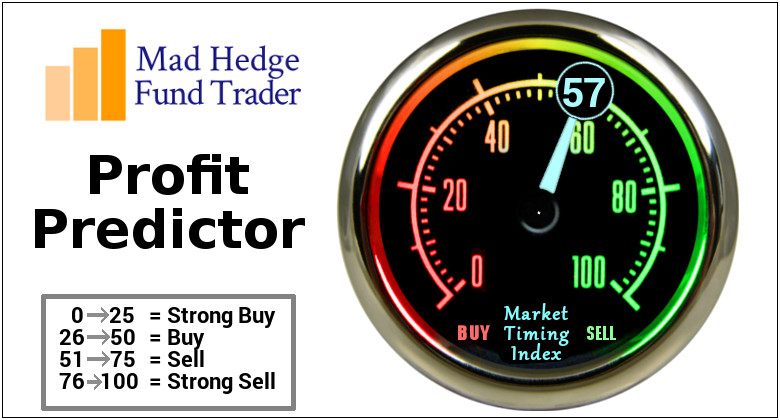
Mad Hedge Biotech and Healthcare Letter
April 11, 2023
Fiat Lux
Featured Trade:
(NOT NOW, BUT SOON)
(JNJ), (NVO), (LLY), (AMGN), (GILD), (ABBV), (BMY)

During times of market turbulence, many investors may find themselves hesitant to participate due to the uncertainty and risks involved. However, one potential strategy to weather the storm could be to seek out dividend stocks.
By investing in these types of equities, individuals can find a sense of stability and security, as they often offer a reliable source of income regardless of market fluctuations. In short, dividend stocks can serve as a safe harbor amid a choppy investment climate.
If you're looking for a healthcare stock with some serious street cred, check out Johnson & Johnson (JNJ).
Before delving into the company, knowing that JNJ’s stock price isn't exactly bargain-bin material is crucial. Still, it's not the most expensive pharmaceutical company out there, either. Novo Nordisk (NVO) and Eli Lilly (LLY) are commanding higher valuations, while JNJ’s peers like Amgen (AMGN), Gilead Sciences (GILD), AbbVie (ABBV), and Bristol-Myers Squibb (BMY) are trading at a lower price-to-free-cash-flow ratio.
Let's not forget that JNJ isn't just a one-trick pony in the pharmaceutical game.
With around 30% of its revenue from medical devices, we can't compare it apples-to-apples with other pharma companies. Peers in the medical devices sector typically trade at higher valuation multiples, so it's essential to keep that in mind when evaluating JNJ's price-to-free-cash-flow ratio.
Moreover, this mega-brand dominates both the pharmaceutical and consumer goods scenes. With fingers in many pies - pharma, med tech, and consumer goods - JNJ has made quite the name for itself.
Despite being a seasoned player, Johnson & Johnson (JNJ) still has some spring in its step; come year-end, the company will be shaking things up with a spin-off of its consumer segment into a new entity, Kenvue.
JNJ’s upcoming spin-off is about sharpening its focus on what matters - its pharma business. And for good reason - this is where the big bucks are made.
The healthcare giant’s immunology and cancer drugs are outperforming the rest of the pack, with two key players, Stelara and Tremfya, delivering some serious sales growth last year. Together, they raked in a cool $12.3 billion, proving that sometimes, less really is more.
JNJ’s pharma segment is crushing it. Darzalex, the multiple myeloma med, racked up an impressive $8 billion in sales, a 32% boost from the previous year. Meanwhile, prostate cancer drug Erleada wasn't far behind, with a 45.7% increase in sales to $1.9 billion.
All in all, JNJ's pharma segment hauled in a massive $52.5 billion in revenue in 2022. Not too shabby.
Looking deeper into its performance in fiscal 2022, JNJ reported a slight increase of 1.2% YoY in sales, reaching $94.9 billion, but currency effects had a negative impact. However, adjusted earnings per share increased by 3.6% YoY, with operational growth at 9.2%.
The "Consumer Health" segment reported a 0.5% decline in revenue, but adjusted operating growth was 3.6%.
The "Pharmaceuticals" segment, responsible for more than half of revenue, increased sales by 1.7% YoY to $52.6 billion, with operational growth at 6.7%.
The "MedTech" segment increased revenue by 1.4% YoY to $27.4 billion, with operational growth at 6.2%.
For fiscal 2023, Johnson & Johnson is expecting revenue growth of 4.5% to 5.5% and adjusted earnings per share growth of 3% to 5%.
Despite the positive reports, JNJ investors are still anxious about the future primarily because of the impending patent expirations of existing products. Unfortunately, the company is heading towards a patent cliff, as it faces the challenge of replacing revenue from products with expiring patents.
Stelara generated $9.7 billion in revenue in fiscal 2022 and will lose patent protection in 2023. Simponi, which generated $2.2 billion in revenue in fiscal 2022 and will lose patent protection in 2024, are two of the biggest concerns.
These two products account for 12.5% of the company's total revenue and 22.5% of the pharmaceutical segment revenue. Replacing these sales will not be an easy feat.
Additionally, in 2027, JNJ will lose patent protection for two other vital drugs - Xarelto and Imbruvica, which generated $2.5 billion and $3.8 billion in revenue in fiscal 2022.
To resolve these concerns, JNJ is putting its money where its mouth is regarding innovation. The company invested a whopping $14.6 billion in R&D in 2022 alone, and it looks like it's paying off. With plenty of promising drugs in the pipeline, JNJ is poised to continue its growth trajectory in the coming years.
When it comes to dividends, JNJ is royalty. With a 60-year track record of annual dividend increases, JNJ company has earned the coveted title of Dividend King.
JNJ boasts a healthy payout ratio of 41% and a juicy dividend yield of 2.8%, well above the S&P 500's average yield of 1.7%. The company's steady cash flow quickly covers these payouts, making it a solid choice for investors seeking reliable income.
While JNJ may be a top-notch investment option in the long run, the current market conditions make it a tad pricey. So, for now, just give it a spot on your watchlist and wait for the dip to go for a bargain. Remember, patience is not just a virtue but also a lucrative strategy in investing.
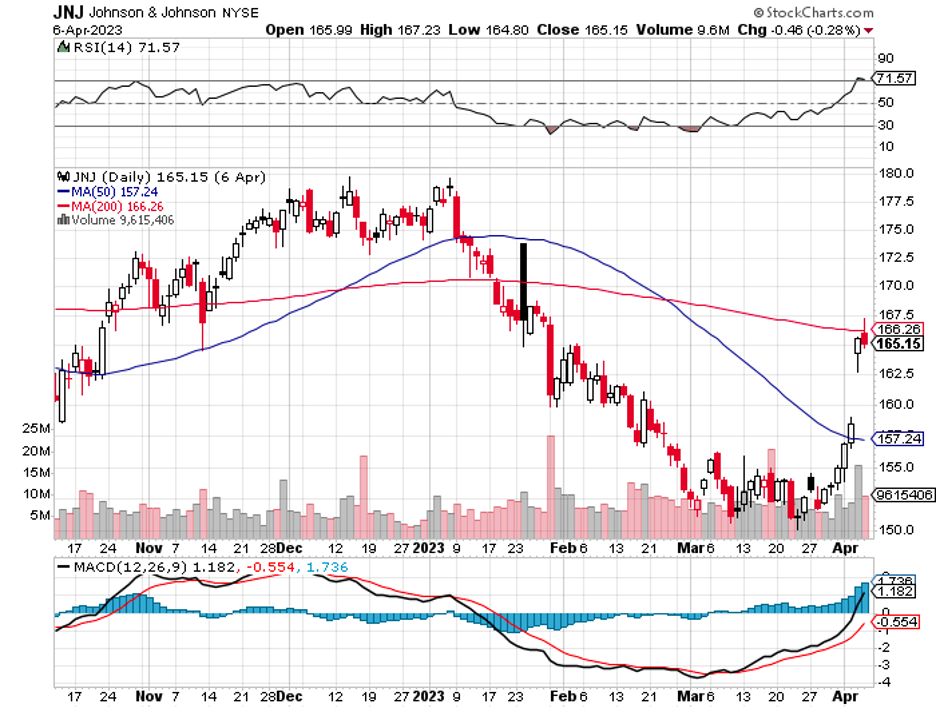
Mad Hedge Biotech and Healthcare Letter
February 9, 2023
Fiat Lux
Featured Trade:
(AN EMERGING KING OF BIOSIMILARS)
(AMGN), (ABBV), (JNJ), (BAYG), (AZN), (REGN)
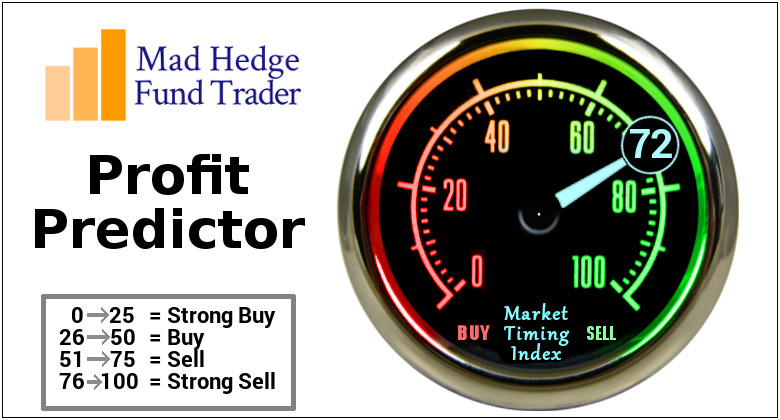
Patience is one of the key attributes that long-term investors need to cultivate, but practicing it is challenging. Stock markets are entirely unpredictable, and their ups and downs tend to rattle even the most experienced investors.
However, it’s essential to keep a calm mind and to be confident that the businesses you invest in have the fortitude to overcome even the most challenging economic or market downturn.
The biotechnology industry is an excellent place to search for stocks that can overcome market turmoils and succeed in the long run because the treatments they develop are so crucial to the lives of their clients.
Amgen (AMGN) is a biotech that would make an excellent long-term investment.
This business, which has been a leader in the biotech sector since the 1980s, is among the largest in the world.
Amgen is also a member of the renowned Dow 30 companies, with a focus on oncology, biosimilars, and inflammatory diseases. In the past 10 years, it has established a strong track record and solid revenue growth trajectory.
The company recently released its fourth-quarter results, and they looked a tad flat on the surface. The report disclosed a total revenue growth of only 2%, which could have been caused by the pressures linked to pricing and competition around the company’s top-selling cholesterol-lowering treatment Repatha, migraine drug Aimovig, and immunology medications Otezla and Enbrel.
Still, Amgen continues to be a solid profit-making business, holding an A+ grade in terms of profitability. It sustains considerable pricing power on its treatments under exclusive patents and from its up-and-coming portfolio of biosimilar candidates.
Amgen has maintained a BBB+ rated balance sheet. It also pays a respectable dividend yield of 3.5%, with a well-protected payout ratio of 44%.
The company has also recorded consecutive growth in this aspect for 11 years. Looking at these figures, Amgen has scored primarily As in terms of consistency, growth, dividend, and yield.
Notably, the company’s foray into the biosimilar landscape would make long-term investors of the company quite happy soon.
Its long-awaited biosimilar version of the No. 1 selling drug worldwide, AbbVie’s (ABBV) Humira, has recently been launched to market.
Amgen’s version, called Amgevita, is the leading biosimilar in this market to date. It already has a five-month lead over the next competitor, arming it with a lot of time to establish a more competitive standing.
Beyond this candidate, Amgen has at least six more biosimilars that it plans to launch in the US and across the globe from 2023 until the end of 2030. This timeline would give the company excellent visibility in the long run.
Another potential biosimilar blockbuster is ABP 654, which is a biosimilar of Johnson & Johnson’s (JNJ) top-selling immunology treatment Stelara.
Amgen also has biosimilar versions of Bayer's (BAYG) and Regeneron’s (REGN) eye disorder drug Eylea and AstraZeneca’s (AZN) rare kidney disease treatment Soliris.
Basically, biosimilars are knock-offs for biologic drugs. They cost less because the manufacturers do not spend less in the research, trials, and approval stages. The processes are also shorter and less risky.
Biosimilars provide a way for patients and the whole healthcare system to save billions of dollars, signaling a bright future for this segment. They offer more affordable options to patients, which is an excellent response to the rising prices of medicines.
This means biosimilar development is far less speculative than creating a new drug, as manufacturers only need to replicate the already established results and success of the existing “original” drug.
Moreover, biosimilars bring with them a degree of pricing power. Unlike traditional treatments, no two biosimilars are allowed to carry the same biologic profile and should still undergo a stringent FDA assessment prior to gaining approval.
Overall, Amgen is a good option for long-term investors on the lookout for a quality biotech to add to their portfolios. Thanks to its burgeoning portfolio of potentially top-selling biosimilars, it has long-term solid revenue growth catalysts. These factors make Amgen a compelling buy on the drop.
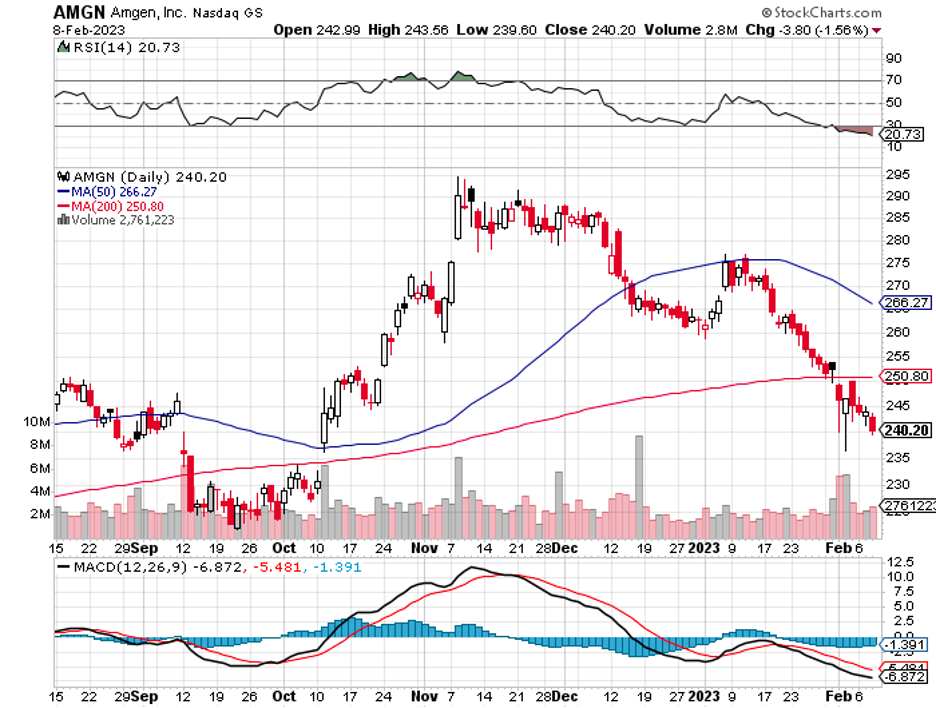
Mad Hedge Biotech and Healthcare Letter
January 24, 2023
Fiat Lux
Featured Trade:
(A MARKET-BEATING HEALTHCARE STOCK)
(LLY), (ABBV), (AMGN), (BMY), (GILD), (JNJ), (MRK), (PFE), (MRNA)
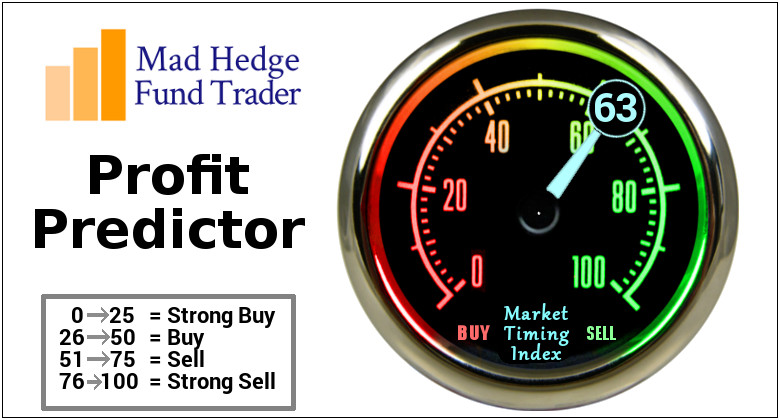
The previous year was horrible for the stock market, with the S&P 500 dropping in value by roughly 19%, marking its first decline since 2018 and only the second time it sank since the 2008 financial crisis.
It was an even more horrid year for the biotechnology industry, with the flagship SPDR S&P Biotech ETF (XBI) sinking by 26% following its more than 20% decline in 2020—a catastrophic blow for such a promising index which delivered an impressive over 30% gains in 6 of the last 10 years.
Meanwhile, the stock prices in the large-cap pharmaceutical segment generally stayed buoyant. The “Big 8,” in particular—AbbVie (ABBV), Amgen (AMGN), Bristol Myers Squibb (BMY), Eli Lilly (LLY), Gilead Sciences (GILD), Johnson & Johnson (JNJ), Merck & Co (MRK), and Pfizer (PFE)—reported an average share price gains of roughly 15%.
Among the names in this list, Eli Lilly has become one of the go-to “safe” stocks during these turbulent times.
In contrast to the broader market, the company has performed exceptionally well in the last 12 months, with its share prices climbing by 12% within the timeframe.
One of the critical reasons that propelled Eli Lilly’s performance was the regulatory approval it obtained for Mounjaro, a diabetes treatment, in May 2022. Although this pharma giant has been hailed as the leader in the diabetes care segment for decades, Mounjaro is a game changer.
This newly approved diabetes treatment could blow any competitor out of the water, with peak sales estimated to hit $25 billion.
Besides diabetes, Mounjaro is also under review as a potential obesity treatment, signifying label expansions for this drug.
If this pushes through, then Eli Lilly would become one of the first movers in the diabetes and obesity markets, with only Novo Nordisk (NVO) standing as a realistic challenger. Based on the market size and the lack of competitors, the profit margins for these segments could be likened to those recorded by Pfizer and Moderna (MRNA) for the COVID-19 vaccines.
There are also other promising candidates in Eli Lilly’s portfolio. One is Donanemab, which is a potential treatment for Alzheimer’s disease. According to the company's Phase 3 study, its candidate delivered better results than Biogen’s (BIIB) approved Alzheimer’s treatment, Aduhelm.
Eli Lilly recently sent its atopic dermatitis treatment candidate, Lebrikizumab, for regulatory review in both the US and Europe. This marks another potential blockbuster for the company, with many treatments queued for review and possible approval by the end of 2023.
As for the company’s current portfolio, most of its products still report good results. For instance, sales of its cancer drug Verzenio rose by 84% year over year to record $617.7 million in the third quarter of 2022. Revenue for the diabetes treatment Trulicity climbed 16% year over year to reach $1.9 billion.
Another factor that makes Eli Lilly attractive is its dividend. Over the past five years, the company has doubled its payout. In 2022, the company disclosed a 15% hike to its dividend payouts. This marked the fifth consecutive year Eli Lilly implemented.
In December 2022, Eli Lilly shared its updated guidance for 2023. For 2022, the company projected that its top line would be between $28.5 billion and $29 billion. That represents a modest growth rate. Eli Lilly shareholders can anticipate better performance this year.
For 2023, the company estimates sales to climb to $30.8 billion. While that amount may appear underwhelming, it’s essential to keep in mind that this is a very conservative estimate. Eli Lilly is taking into account several concerns that may affect its growth, such as patent exclusivity losses and a decline in its COVID-19 sales.
Overall, Eli Lilly has proven itself to be a good and solid business that looks in excellent shape to continue delivering market-beating returns.
With a market capitalization of over $350 billion and several candidates in its pipeline, this company has a strong potential to be worth much more in the following years. Also, it’s critical to bear in mind that since 2020, Eli Lilly shares have skyrocketed by 176%, dwarfing the S&P 500’s 20%—a trend I expect to continue. I suggest you buy the dip.
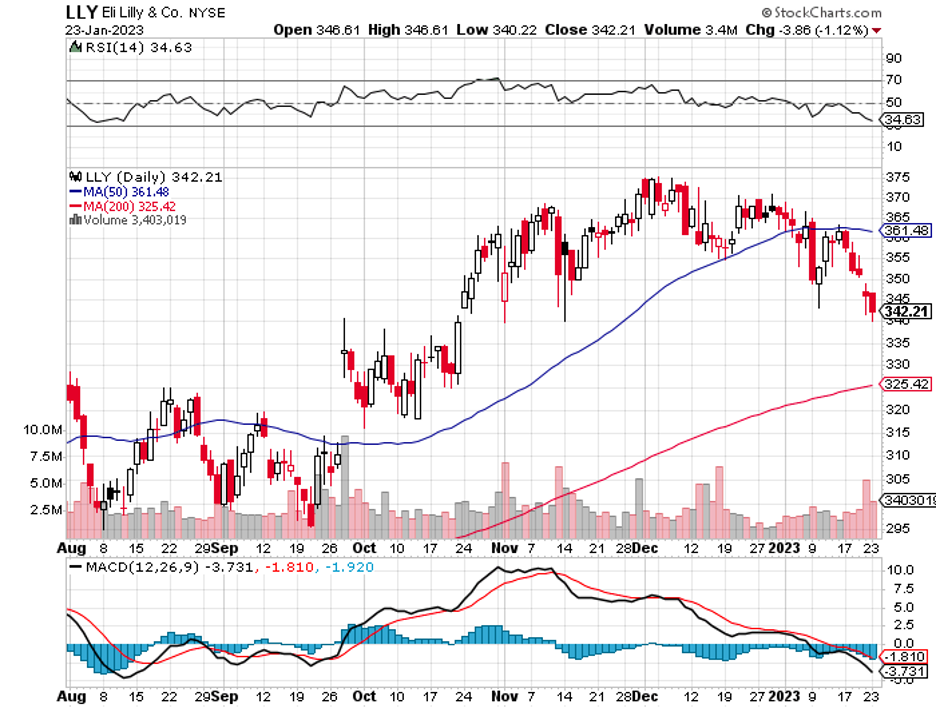
Mad Hedge Biotech and Healthcare Letter
January 17, 2023
Fiat Lux
Featured Trade:
(COMPROMISE IS THE BEST STRATEGY)
(JNJ), (AMGN), (TAK), (VRTX), (CRSP), (EDIT), (PFE), (CRBU), (SGMO), (LLY), (AXSM)
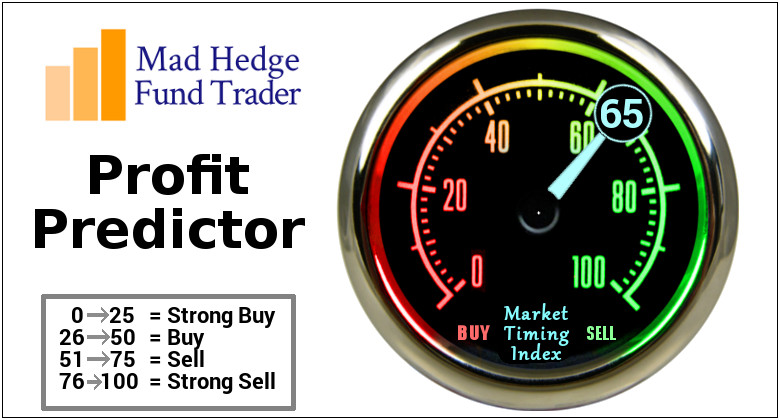
An optimist looks at bubbles and visualizes champagne, while a pessimist’s mind goes to Alka-Seltzer. The same thing happens with investors.
Some believe that the steep losses suffered by stocks and bonds in 2022 are a much-needed “cleansing,” which would set the stage for renewed partnerships and collaborations along with high returns. Others simply view it as the first chapter in a protracted bear market.
Meanwhile, a handful believes that it’s a combination of both perspectives—especially for the biotechnology industry.
Roughly two years following the decline of biotechnology stocks, several executives from small and midsize organizations finally concede that their share prices might no longer be able to bounce back anytime soon. In fact, some have been fielding panicked calls from execs of fledgling biotech firms, offering to sell their companies at a discount.
The alteration in the medical device and biotechnology landscape only started a few months before the previous year ended.
This is because, before the change in perspective, when the SPDR S&P Biotech exchange-traded fund (XBI) had slid by about 40% from its 2021 peak, many leaders in the biotech sector still believed that their companies could regain momentum.
The primary concern for smaller biotech and medical devices companies, which allocate years to developing and testing products without any commercially approved treatment, is that the continuous decline in their valuations has made it practically impossible to generate new money to fund any of their projects.
Given this scenario, many small and midsize biotechs would go under soon, particularly those with no data strong enough to provide near-term growth catalysts.
This is where Big Pharma names are expected to come in. After all, these large-cap companies offer an alternative option with their non-dilutive sources of funding and ever-growing war chests.
Big companies, though, have been more cautious in cutting big checks for acquisitions. Despite the high expectations last year, we only saw a few massive deals, including Abiomed’s sale to Johnson & Johnson’s (JNJ) for $19 billion and Amgen’s (AMGN) $30 billion agreement with Horizon Therapeutics.
Instead, these Big Pharma companies appear to prefer partnerships and collaborations. In these deals, they give out smaller payments to biotechnology firms to work with them on specific early-stage programs.
This type of investment seems to be a safer bet for big companies because it allows them to make several deals without spending too much. They can even collaborate with competing biotechs to determine which could develop the most effective and cost-efficient solution.
Smaller biotechs benefit from this type of deal as well.
In the pre-pandemic era, the valuations of these companies quickly soared based on the potential of their pipeline candidates. Some share prices would skyrocket with just a hint of positive data. This is no longer the case these days, not only because investors have become more discerning but also more anxious over experimental programs.
So instead of getting acquired, smaller biotechs can choose to strike partnerships with large-cap companies. This is an excellent way to inject some funding into their programs and, hopefully, provide them with revenue streams, especially since Big Pharma companies know how to market new products.
It sounds challenging, but a genuinely promising program could fetch a large sum.
Perhaps the most significant indicator that not all hope is lost comes from Takeda (TAK) when it purchased an experimental treatment undergoing tests as a potential psoriasis medication.
This candidate, developed by a privately held biotechnology firm called Nimbus Therapeutics, was sold for a whopping $4 billion upfront, plus roughly $2 billion more for future milestone payments. And here’s the clincher: Takeda got the experimental drug by a razor-thin margin.
In terms of acquisitions, some larger companies have been open to that route. For instance, AstraZeneca (AZN) shelled out $1.3 billion for CiniCor Pharma, while Ipsen (IPSEY) purchased Albireo Pharma (ALBO) for $1 billion.
While the future for smaller biotechs remains uncertain, several names continue to be in conversations whenever acquisitions are discussed.
There’s Vertex Pharmaceuticals (VRTX), which has long been reported to take interest in acquiring CRISPR Therapeutics (CRSP) and Editas Medicine (EDIT), with the latter looking more attractive thanks to its cheaper price tag.
Meanwhile, Pfizer (PFE) has been shopping around for a biotech to bolster its gene-editing programs, and so far, Caribou Biosciences (CRBU) and Sangamo Therapeutics (SGMO) are under serious consideration.
With its continuing interest in central nervous system diseases, such as Alzheimer’s and Parkinson’s, Eli Lilly (LLY) has been aggressive in its search for a company to acquire. Among the strongest candidates is Axsome Therapeutics (AXSM).
With this daunting reality setting in, one thing has become absolutely sure: the biotechnology sector has become a buyer’s market for big companies with cash to spare for acquisitions and collaborations.
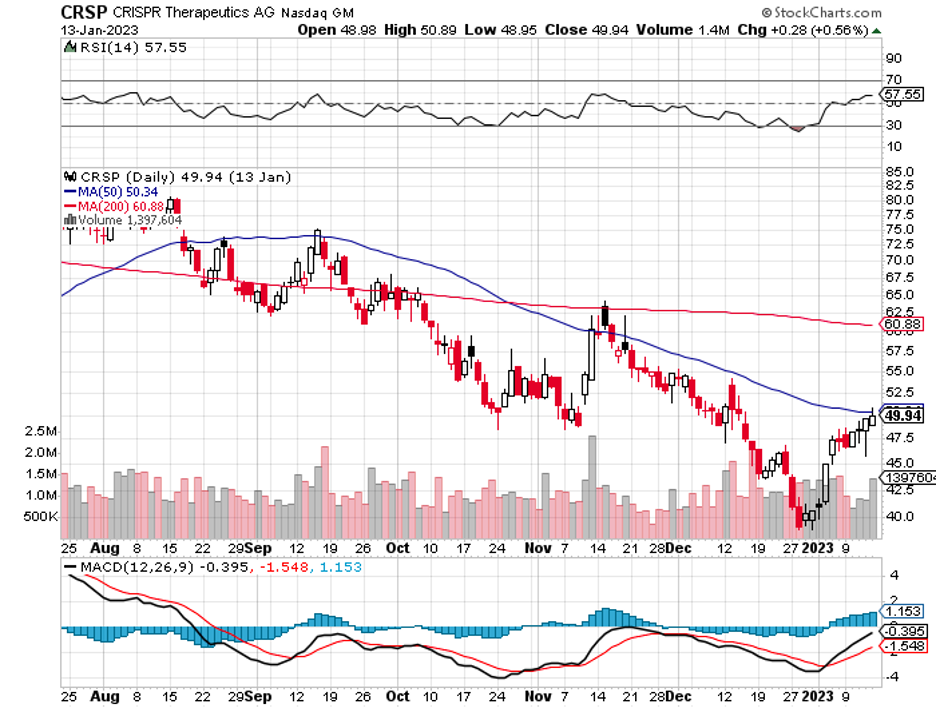

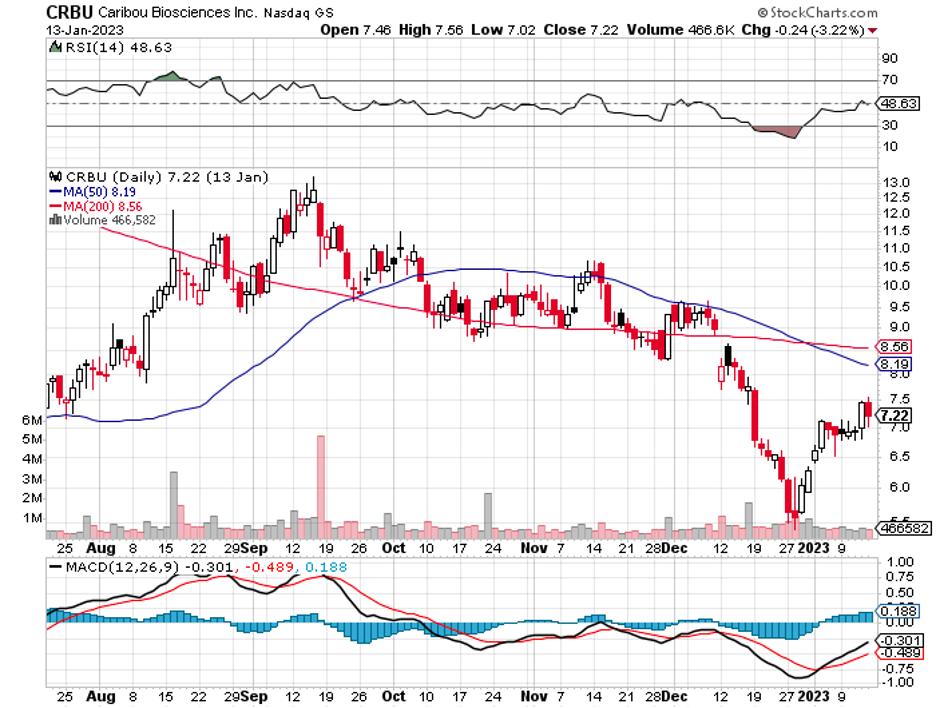
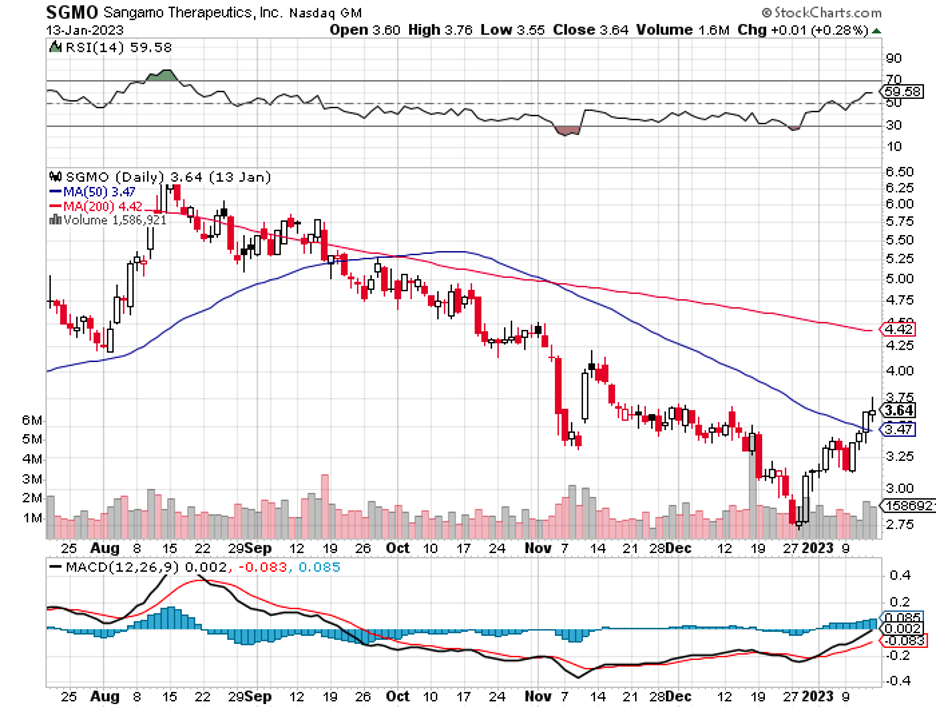

Mad Hedge Biotech and Healthcare Letter
December 13, 2022
Fiat Lux
Featured Trade:
(A LONGER-TERM INVESTMENT FOR PATIENT BIOTECH HOLDERS)
(AMGN), (HZNP), (JNJ), (SNY), (ABBV)

Amgen (AMGN) announced what could be the biggest M&A deal in the biotechnology world this 2022.
The giant biotech disclosed its deal to acquire Horizon Therapeutics (HZNP) for $27.8 billion in cash, amounting to roughly $116.50 per share which is quite a move for Amgen. Prior to this, Amgen was engaged in an aggressive bidding war against fellow bigwigs Johnson & Johnson (JNJ) and Sanofi (SNY).
While they is a massive company with a market capitalization of $140 billion, shelling out $27.8 billion is still a significant risk.
Aside from that, Horizon is based in Ireland; Irish takeover rules Amgen and its competitors needed to comply with repeated disclosure of its key documents throughout the course of the negotiations.
This begs the question: Why was Horizon so sought-after by some of the biggest names in the biotechnology and healthcare world?
One reason is that all companies, regardless of size, need a blockbuster—and this doesn’t spare Amgen and its peers.
Actually, Amgen has been preparing for patent expirations of some of its top-selling drugs for years. By 2030, the company would be dealing with the threat of a very serious decline in revenue of key products Otezla and Enbrel. When that comes, these two blockbusters would need to battle it out with the slew of generics and biosimilars raring to compete with their market share.
Meanwhile, Enbrel, which is projected to rake in $4.1 billion in revenue in 2022, will face biosimilar competition as early as 2023. Its main and biggest rival, AbbVie’s (ABBV) Humira, will lose patent exclusivity next year. That opens the floodgates for biosimilars and generics, pushing back against Enbrel’s share of the market while attempting to take over Humira’s.
Looking at how much these blockbusters contribute to Amgen, it’s projected that $10 billion or approximately 40% of the company’s revenue could be lost by the end of the decade.
This is where Horizon comes in.
The most crucial among Horizon’s products is Tepezza, which targets a rare condition know as thyroid eye disease. Based on its performance since getting launched in 2020, this drug is estimated to rake in roughly $2 billion in 2022.
Another potential blockbuster from Horizon is Krytexxa, which was developed for uncontrolled gout, and is projected to record $706 million in sales this year.
The third potential blockbuster is Uplinza, which targets an autoimmune disease called neuromyelitis optics spectrum disorder. This product is anticipated to reach $159 million in sales in 2022.
These three could bring in roughly $3.3 billion in revenue for 2023.
Based on the company’s pipeline and portfolio, it can add $2 to $5 billion of new product sales from 2024 to 2030. Needless to say, this would offset the patent cliffs faced by Amgen.
In terms of pipeline, Horizon has several of promising candidates as well. In 2021, the company acquired a biotech named Viela Bio. At that time, the smaller company’s candidates focused on inflammatory diseases and are valued at $3.1 billion.
On top of these, Horizon’s pipeline has candidates targeting rare diseases like myasthenia gravis, lupus, and Sjogren’s Syndrome. With Amgen’s size, experience, and resources, the development of these products would most likely be accelerated.
Originally, Horizon’s strategy was to keep buying clinical-stage treatments from smaller biotechs then pushing them through to commercial approval. Since then, it has transformed into a company that develops its own candidates targeting rare diseases and lucrative markets. Given its portfolio and pipeline, Horizon seamlessly fits with Amgen’s strategy.
Overall, this acquisition is an excellent deal for both companies.
While Amgen shareholders shouldn’t expect any significant increase in dividends any time soon or substantial share buybacks, it’s reasonable to believe that the company is poised for more growth in the coming years.
This makes Amgen a worthwhile buy for longer-term investors who are committed to staying with the company until 2030 or longer.
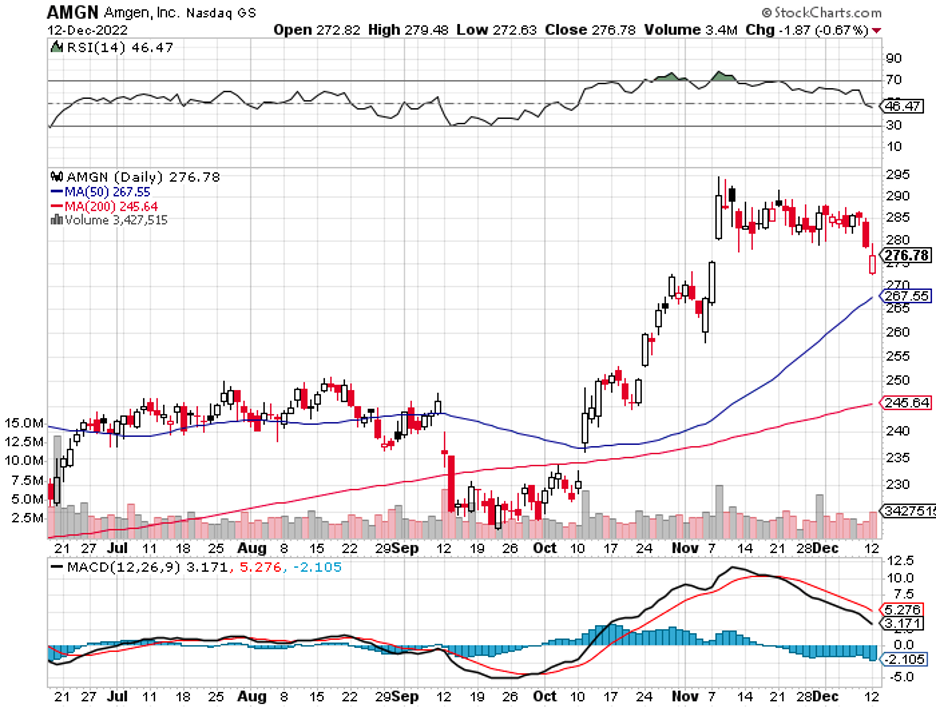
Legal Disclaimer
There is a very high degree of risk involved in trading. Past results are not indicative of future returns. MadHedgeFundTrader.com and all individuals affiliated with this site assume no responsibilities for your trading and investment results. The indicators, strategies, columns, articles and all other features are for educational purposes only and should not be construed as investment advice. Information for futures trading observations are obtained from sources believed to be reliable, but we do not warrant its completeness or accuracy, or warrant any results from the use of the information. Your use of the trading observations is entirely at your own risk and it is your sole responsibility to evaluate the accuracy, completeness and usefulness of the information. You must assess the risk of any trade with your broker and make your own independent decisions regarding any securities mentioned herein. Affiliates of MadHedgeFundTrader.com may have a position or effect transactions in the securities described herein (or options thereon) and/or otherwise employ trading strategies that may be consistent or inconsistent with the provided strategies.
This site uses cookies. By continuing to browse the site, you are agreeing to our use of cookies.
OKLearn moreWe may request cookies to be set on your device. We use cookies to let us know when you visit our websites, how you interact with us, to enrich your user experience, and to customize your relationship with our website.
Click on the different category headings to find out more. You can also change some of your preferences. Note that blocking some types of cookies may impact your experience on our websites and the services we are able to offer.
These cookies are strictly necessary to provide you with services available through our website and to use some of its features.
Because these cookies are strictly necessary to deliver the website, refuseing them will have impact how our site functions. You always can block or delete cookies by changing your browser settings and force blocking all cookies on this website. But this will always prompt you to accept/refuse cookies when revisiting our site.
We fully respect if you want to refuse cookies but to avoid asking you again and again kindly allow us to store a cookie for that. You are free to opt out any time or opt in for other cookies to get a better experience. If you refuse cookies we will remove all set cookies in our domain.
We provide you with a list of stored cookies on your computer in our domain so you can check what we stored. Due to security reasons we are not able to show or modify cookies from other domains. You can check these in your browser security settings.
These cookies collect information that is used either in aggregate form to help us understand how our website is being used or how effective our marketing campaigns are, or to help us customize our website and application for you in order to enhance your experience.
If you do not want that we track your visist to our site you can disable tracking in your browser here:
We also use different external services like Google Webfonts, Google Maps, and external Video providers. Since these providers may collect personal data like your IP address we allow you to block them here. Please be aware that this might heavily reduce the functionality and appearance of our site. Changes will take effect once you reload the page.
Google Webfont Settings:
Google Map Settings:
Vimeo and Youtube video embeds:
